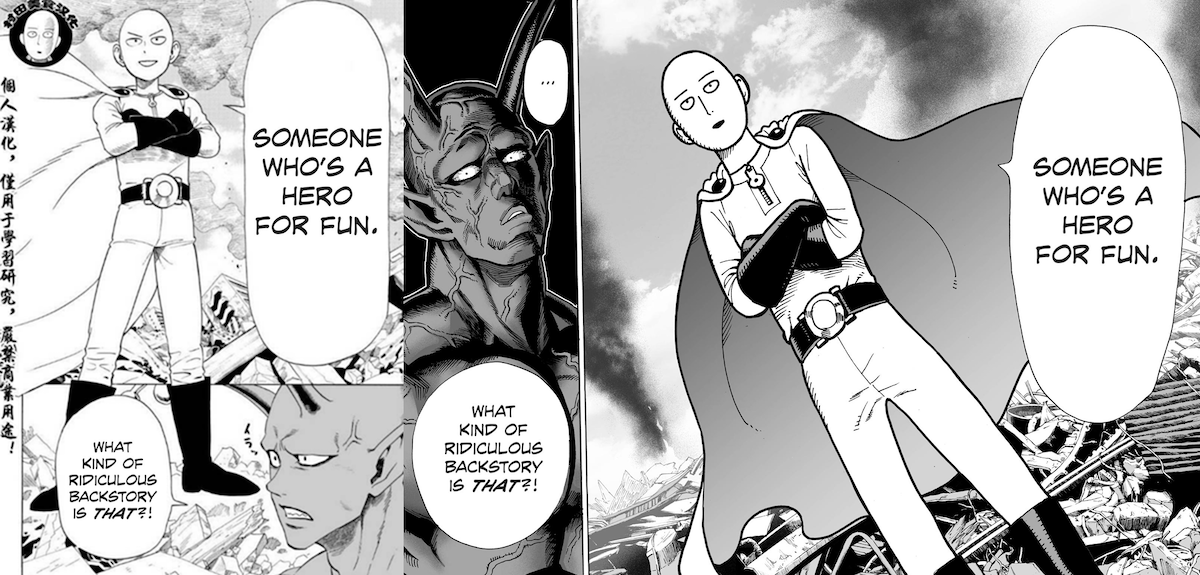Iconic Characters and Expressive Lines
One form of iconic representation is cartooning the characters and creating a split between the main characters from the background and other roles in a comic. By doing so, the readers can mask themselves in a character regardless of the setup. In a way, the characters become more identifiable without compromising the complexity of the scene. The masking effect is the reason I’m drawn to traditional Japanese comics. A character’s expression goes from confused to mad then happy, all by using a few different lines in the character’s face. As Scott nicely puts it in his book, “One set of lines to see, another set of lines to be”. Characters like Chibi Maruco chan and Saitama from One punch man are expressive yet straightforward and relatable. On the other hand, irrelevant or evil characters in manga are shown with so many details to make them stand out and intentionally make the reader objectify and distinguish them.
 Figure 1: Notice how the main character is iconic with less details than the villian. Also notice the background details and shapes in the background, creating a split between the main character and the scene.
Figure 1: Notice how the main character is iconic with less details than the villian. Also notice the background details and shapes in the background, creating a split between the main character and the scene.
In chapter 5, the author talks about the use of lines and shapes in communicating emotions. One concept that resonated with me is the representation of the visible and invisible worlds. Let’s take as an example the iconic representation of cartooning. A face is an abstract object; adding lines and shapes in the expected positions on the character’s face, such as sweat beads from the forehead or tear shapes from the eyes, indicates a familiar and visible emotion (fear or sadness). However, when those shapes are placed away from their expected position, say behind the character, they hint at an invisible world of the character, an inner state of some sort depending on the scene. This style is seen in Japanese comics (manga), in which some characters would go to a monologue or some other reality.